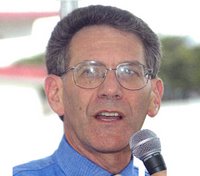by Leslie Wollack, National League of Cities
As lawmakers struggle to find answers to surging fuel prices, states are weighing alternatives to help their citizens and use of mass transit has skyrocketed across the country. Car dealers report that demand for fuel-efficient cars have been soaring, as well.
According to Stateline.org, states are offering proposals such as flex-time hours for state employees, allowing campers to store their recreational vehicles longer at state parks and gas tax holidays. Alaska Gov. Sarah Palin (R) proposes to give residents debit cards for gas, heating fuel and electricity.
Mass transit systems around the country report standing-room-only crowds on bus lines where seats were once plentiful and parking lots at many bus and light rail stations are suddenly overflowing.
“It’s very clear that a significant portion of the increase in transit use is directly caused by people who are looking for alternatives to paying $3.50 a gallon for gas,” according to William W. Millar, president of the American Public Transportation Association (APTA).
The largest jump has come from metropolitan areas in the South and West where there are fewer transit options. Denver has seen an 8 percent jump in the first three months of the year compared with last year. Charlotte, N.C., has reported a 34 percent jump in ridership in the past year on its new light rail line. Southern Florida estimates an increase of more than 20 percent in riders during March and April on its commuter rail system between Miami, Fort Lauderdale and West Palm Beach.
Central Arkansas Transit Authority reported an increase of about 600 riders a day compared to this time last year. Cities with established public transit systems such as New York, Philadelphia and Boston are seeing smaller increases that still are setting records. New Jersey Transit is setting ridership records for the sixth consecutive year, reporting more than 900,000 trips per weekday on its trains, buses and light-rail vehicles, an increase of 3.5 percent over a year earlier.
A survey by APTA found that a growing number of vacationers also intend to take advantage of the local subway trains and buses while vacationing in U.S. cities this summer. Thirty-five percent of those who will use public transit while visiting a city said they are more likely to use it this summer as opposed to last year.
“With soaring gas prices, the expense of parking your car or renting a vehicle, a growing number of travelers say they will use the local bus and train as the quickest way to save money while visiting major cities,” said Millar. “Travelers also like the fact that its use helps make the environment greener while they can keep more green in their wallet.”
Travelers who originate from large metropolitan areas are more likely to take advantage of a city’s local public transportation system. Fifty percent of those traveling to a city who use transit on their trip are from large urban areas, while 24 percent are from medium-sized metro areas and 27 percent are from smaller cities and towns.
Note: eLauderhill News has been advised that Tri-Rail boasted its highest monthly ridership ever in May and was among the nation's fastest growing commuter rail systems in the first quarter of 2008.
The South Florida Regional Transportation Authority, which runs the commuter train, said 371,798 passengers boarded last month, the highest ridership recorded in a single month since service began in 1989.
The trains carried an average of 15,343 passengers a day weekdays in May, a 22.4-percent jump over the same month last year.
At the same time, due to the lack of the State Legislature in providing a dedicated funding source for Tri-Rail, and Palm Beach, Broward and Miami-Dade County Commissions having to make significant cuts due to State Legislature and voter approved mandatory reductions in revenue sources, the three counties may be reducing their subsidy to Tri-Rail.
If this happens, Tri-Rail will have to cut back from 50 trips/week to around 20 trips/week. It would also put them in jeopardy of being in violation with a Federal Grant. Therefore, it is possible that the Federal Government could demand the return of $300 million, which Tri-Rail does not have.
No matter how this is viewed, it is clear that a transportation service, whose need is growing every day, stands a good chance of being reduced or even lost when it is needed most, due to the response by our State Legislature.
Subscribe to:
Post Comments (Atom)


No comments:
Post a Comment